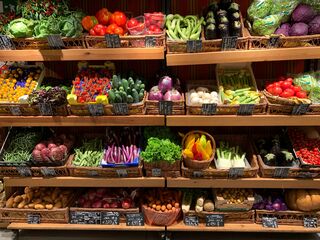Motivation
Why You Should Write a Shopping List
....even if you shop from home.
Posted October 15, 2021 Reviewed by Ekua Hagan
Key points
- One study found that people who reported using a shopping list made fewer unplanned purchases during their shopping trips.
- Aside from in-person shopping trips, a study shows that shopping lists also help to reduce purchases during online shopping.
- Shopping lists tend to reduce purchases because they remind the shopper of their goals and make unplanned purchases more obvious.

Entire industries are committed to making grocery stores as appealing as possible. Product placement is just so, the lighting is flattering, the cereal boxes are colorful and enticing, the bread smells are delicious. And there’s you, with a budget, who hopes for a low total on the receipt. Most would agree that avoiding spending more than intended and avoiding food waste are important goals. But dealing with the onslaught of temptations when grocery shopping can be difficult. One of the tools that makes this task easier is a shopping list.
Shopping lists are often seen as memory aids (and they are!) or a way to shop more efficiently, finding the shortest paths to all the products you need (and they likely will!). But lists can also reduce how much you buy and curb overspending.
In a study with 2300 shoppers, Jeffrey Inman at the University of Pittsburg found that people who reported using a shopping list made fewer unplanned purchases during their shopping trips. Indeed, the old adage “never go shopping hungry” did not apply when shoppers brought shopping lists with them in the store: Dan Gilbert at Harvard University found that hungry shoppers with lists did not make any more unplanned purchases than other shoppers (whereas hungry shoppers without lists did buy more than others).
Virtual shopping
You might have moved to online shopping during the pandemic. Do shopping lists still help to reduce purchases and money spent in online (virtual) shopping situations? Yes, they do. In two studies conducted in our lab at Carleton University, participants who wrote out shopping lists before completing an online grocery trip bought fewer items than participants who did not write a shopping list beforehand.

In one of these studies, shoppers kept the shopping list in front of them during the virtual shopping trip; in another, they did not. In both cases, they bought fewer items when they had written a list than when they had not written a list.
We also found that writing a shopping list is better than simply setting a budget. When participants in our second study were asked to set a shopping goal and predict how much they would spend on the online grocery trip, they made a similar amount of purchases as participants who did not set a budget, which was more than participants who wrote a shopping list.
So why do lists work?
There are likely several reasons for the benefits of shopping lists. First, thinking ahead sets itemized goals for the shopping. Just like it is easier to control impulses when one is not hungry, it is easier to set these goals before seeing the tempting purchases. Second, simply writing down the planned purchases will make it more likely that the shopping goals will be remembered in the store (even more so if you bring the list with you!). Third, the total number of planned purchases might act as an anchor—it is easier to see that the shopping cart has 20 instead of the planned 10 items than it is to track costs.
Self-control is not simply gritting your teeth and controlling the urge to buy—it includes using tools such as shopping lists. Although pen and paper lists are good tools by themselves, there are many apps that serve as more sophisticated digital tools. Whether on an app or on paper, writing a shopping list can help you stick to your budget and to planned purchases—even if you shop virtually, from home.
Of course, there’s nothing wrong with spending money on groceries—if you go grocery shopping, save all your money, and come home with empty bags, that means you’ve failed at the grocery task! But if you do want to spend less and you find yourself often buying more than intended, the simple act of writing a shopping list might be one tool that helps you achieve that goal.
References
Davydenko, M., & Peetz, J. (2020). Shopping less with shopping lists: Planning individual expenses ahead of time affects purchasing behavior when online grocery shopping. Journal of Consumer Behaviour, 19(3), 240-251.
Gilbert, D. T., Gill, M. J., & Wilson, T. D. (2002). The future is now: Temporal correction in affective forecasting. Organizational Behavior and Human Decision Processes, 88(1), 430–444. https://doi.org/10.1006/ obhd.2001.2982
Inman, J. J., Winer, R. S., & Ferraro, R. (2009). The interplay among category characteristics, customer characteristics, and customer activities on in-store decision making. Journal of Marketing, 73(5), 19-29.


